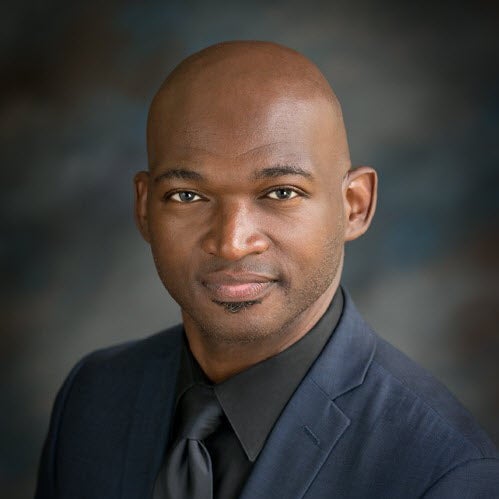Spotlight Feature

Karriem S. Watson, DHS, MS, MPH
Associate Executive Director
UI Health, Mile Square Health Center
Chicago, Ill.
Background: Helping patients control and manage their diabetes was the goal of a new program launched by UI Health’s Mile Square Health Center, near the University of Illinois at Chicago. The first step was to identify patients who should be targeted for an intervention and then provide the resources and supports needed to keep their diabetes in check while improving their overall health. With funding and technical assistance from the health equity grant collaboration between the American Hospital Association’s Institute for Diversity and Health Equity and Blue Cross Blue Shield of Illinois, Mile Square came up with a successful outreach solution.
Karriem S. Watson, DHS, Mile Square’s associate executive director, shares details about the initiative and efforts that went into planning the program, including how community partners helped connect providers with patients, enabling diabetic patients to receive the care they needed.
Why did your health system decide to move forward with this new initiative?
Mile Square developed the Mi CARE DM, short for Mile Square Community Access, Referral and Education Program for Diabetes Mellitus, out of the growing concern to address the needs of our diabetic patients. As a federally qualified health center, Mile Square is required to report annually on the number of patients who are diabetic and have uncontrolled diabetes (HgBA1C levels >9). Recognizing that our diabetic patients needed to receive comprehensive care, we developed and moved forward with the Mi CARE DM initiative.
“Our goal was to identify both barriers and facilitators of addressing the clinical as well as social needs of our diabetic patient population.”
What is the goal of your program and how do you anticipate your efforts will impact patients?
Our goal was to identify both barriers and facilitators of addressing the clinical as well as social needs of our diabetic patient population. The overarching goal of the program is to improve outcomes of our diabetic patients through the following objectives:
- develop patient registries that allow us to identify and track all diabetic patients;
- pilot a diabetic education program with high risk diabetic patients; and
- launch a food delivery program to introduce healthy produce options along with healthy, diabetic-friendly recipes to patients — in partnership with a local urban farm and community stakeholder.
Our program enables us to identify the needs of our diabetic patients, identify what barriers prevent adherence to treatment recommendations as well as facilitators that enable treatment engagement. We anticipate that the program will have a positive impact on our patient population and provide important information for us to develop and implement comprehensive programs to address multiple determinants of health.
How did community partnerships factor into efforts to build this new program?
Our community partner is Growing Home, an urban farm on the South Side of Chicago. We identified Growing Home as a partner based on a larger project that we were developing to identify opportunities for a “food as medicine” program. It is located within our patient community. Also, their workforce development opportunities for local residents align with addressing the socioeconomic issues that impact food insecurity of residents in underserved communities. Prior to this partnership, we had the opportunity to tour the Growing Home facility, learn about their mission and it was clear that they would be an ideal partner.
“Structural factors, such as systemic racism, also impact the health outcomes of our patients and serve as a barrier to health equity.”
Does a clearer understanding of socioeconomic conditions impacting patients and other barriers to achieving health equity help you build a better program?
One of the things that sparked this project was a student-led assessment from our Urban Medicine program that revealed 87% of the Mile Square South Shore patients who participated in the assessment reported food insecurities. Additionally, we know from our clinic data and community level data that our patient population faces a greater burden of socioeconomic challenges related to unemployment and lack of access to educational programs.
Structural factors, such as systemic racism, also impact the health outcomes of our patients and serve as a barrier to health equity. As a result, we wanted to develop the Mi CARE DM program in a way that addressed the multiple barriers that our patients face — impacting their health outcomes.
What information would you share with others about advancing health equity within their organization?
As health care providers, we must be intentional about addressing health inequities within our patient population. We also want to stress the importance of developing programs that address those upstream factors that impact health outcomes. Additionally, we want to highlight the importance of sustainability and advocacy.
Our hope is that outcomes from our food delivery program can introduce policy changes so that all health centers can easily refer their patients to resources for food. It is vital that health organizations continue to identify community resources to ensure that all patients have access to healthy food to improve their health outcomes.
